Every house has a story to tell. Almost all of the good ones involve ghosts.
Gothic narratives are almost inseparable from the places or dwellings it chooses to fictionalize- whether it’s a crumbling manor house or a decadent mansion or an abandoned apartment building- the house is always sentient, always watching and listening to the lives of those who live and once lived in them, sometimes even swallowing them up in its darkness. If there is indeed magic in this world, and if magic is that which invisibly connects us all together, then every home is a repository of magic for it is where people reveal their truest selves and are at their most vulnerable. The house becomes a spectator, confidant, character- and sometimes even a storyteller of untold secrets.
Edgar Allan Poe’s short story “The Fall Of The House Of Usher” will tell you, how the house too crumbles and falls apart in loneliness, when all its occupants have finally died. The haunting tale of “Rebecca” is incomplete without the ivy-entwined mansion in the background, and it seems fitting that the tale ends when that once-home goes up in flames. A part of Dracula’s menace also stems from the sprawling derelict castle Jonathan found himself trapped in. Even popular movies about the supernatural such as “The Conjuring” and “Paranormal Activity” are centered on a particular space, without which the identity of the poltergeist or the ghost is incomplete. Perhaps, the ghost isn’t just an echo of a person from the past, but the voice of the house itself, seeking to make itself heard and known.
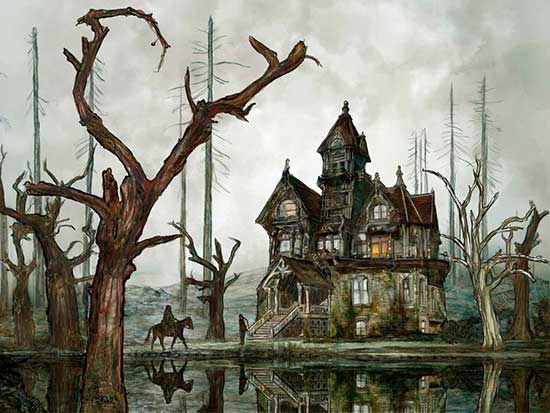 So it shouldn’t be a surprise that even in the genre of horror and paranormal films, stories about haunted houses appeal to one’s imagination the most. In fact, while blockbusters like “Poltergeist”, “The Amityville Horror” and even “The Sixth Sense” continue to dominate most people’s lists, the 1963 movie, “The Haunting”, adapted from the 1959 best-selling Gothic mystery novel “The Haunting Of Hill House” by Shirley Jackson, remains an all-time favorite among horror aficionados and enjoys a cult following- so much that it is currently being remade for the small-screen as a limited series for Netflix.
So it shouldn’t be a surprise that even in the genre of horror and paranormal films, stories about haunted houses appeal to one’s imagination the most. In fact, while blockbusters like “Poltergeist”, “The Amityville Horror” and even “The Sixth Sense” continue to dominate most people’s lists, the 1963 movie, “The Haunting”, adapted from the 1959 best-selling Gothic mystery novel “The Haunting Of Hill House” by Shirley Jackson, remains an all-time favorite among horror aficionados and enjoys a cult following- so much that it is currently being remade for the small-screen as a limited series for Netflix.
Perhaps the real reason why the Hill House still haunts our imagination is because the belief in ghosts and poltergeists is present in almost every culture worldwide. We may not all have faced an uncanny encounter with the supernatural, but we have grown up hearing stories about them- either fictional or real. There are places in the neighborhood we avoid- a room where someone hanged himself that is always locked, a “cold spot” where someone was murdered that still remains chilly as ever, even in the middle of summer, an alleyway no one uses anymore because of some shadowy being that lurks within it. Even a walk in a graveyard might alert us to “psychic residues” all around us- the voices of the dead may not speak our language, but we may still hear them. And just like everything else in our world, each of us interprets these paranormal experiences quite differently, much like the characters in “The Haunting of Hill House.”
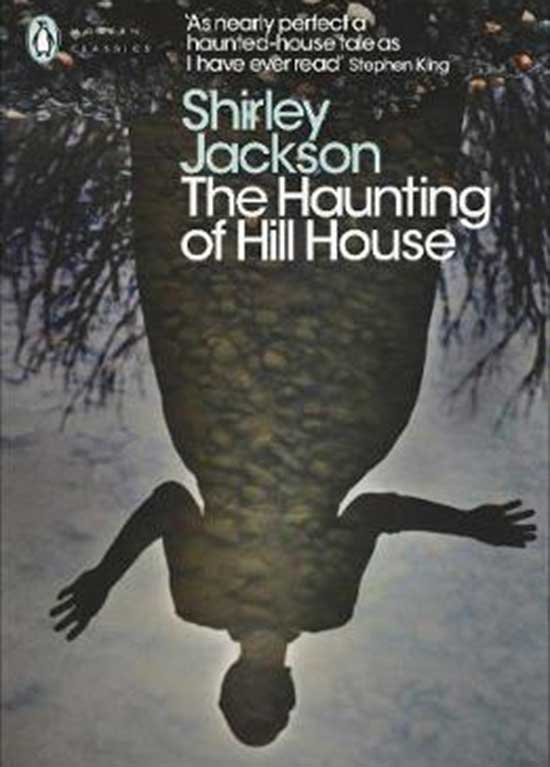 In time, we create our own stories about the places we inhabit, and gradually they morph into personal myths that take a shape of their own. Stories of ghosts and hauntings date back to Biblical times and beyond. The darkness of strange forests and mountain caves had always terrified man- fire didn’t just help him to roast his meat and keep his family warm, fire helped him to keep the spirits and demons away, albeit temporarily. In our primeval subconscious, perhaps we believe that the dead never truly leave us and that the darkness still conceals some secrets. But we also fear that when the dead do return to us on this “material” plane, they may return in a form that we may not expect or recognize. That is why we are quick to differentiate between words like “ghost”, “spirit”, “demon” and “poltergeist”. All ghosts may essentially be seen as “spirits” and indeed many of them are assumed to be benign, but with light must also come darkness and the manifestation of malevolence seeking to cause trouble and chaos and sometimes even death.
In time, we create our own stories about the places we inhabit, and gradually they morph into personal myths that take a shape of their own. Stories of ghosts and hauntings date back to Biblical times and beyond. The darkness of strange forests and mountain caves had always terrified man- fire didn’t just help him to roast his meat and keep his family warm, fire helped him to keep the spirits and demons away, albeit temporarily. In our primeval subconscious, perhaps we believe that the dead never truly leave us and that the darkness still conceals some secrets. But we also fear that when the dead do return to us on this “material” plane, they may return in a form that we may not expect or recognize. That is why we are quick to differentiate between words like “ghost”, “spirit”, “demon” and “poltergeist”. All ghosts may essentially be seen as “spirits” and indeed many of them are assumed to be benign, but with light must also come darkness and the manifestation of malevolence seeking to cause trouble and chaos and sometimes even death.
The arrival of a vengeful ghost or poltergeist at our doorstep is the ultimate loss of control- we are faced with a being that we cannot shoot with a gun or bribe away or diplomatically refuse entry. The laws of the spirit world operate differently, and our faculty of rational thinking suddenly breaks down. Poltergeists interact with our world, while cheerfully disobeying all the known laws of science- we cannot fight back with violence or with any known “rational” means.
To even admit to ourselves that it is real, is to deny our rationality and accept the existence of forces we can neither control nor understand- and as we aren’t equipped with the tools to face it, we can only run and hide. Perhaps this is why we find movies about hauntings and poltergeists so entertaining and fascinating- we vicariously live through the characters’ nightmarish experiences and whether they finally win, after defeating seemingly impossible odds, we simultaneously feel victorious. If they can live through it, and live to tell the tale, why can’t we, as well? But of course, these come safely packaged under the guise of “fiction”. Most of us can simply turn off a horror film if it suddenly becomes too scary and live out our lives without being bothered by the supernatural. This makes taking the journey into “The Haunting of Hill House” even more enticing.
But not everyone is that lucky.
Actual cases of haunt and poltergeist phenomena continue to be reported around the world. While injuries and fatalities are rare, they do happen. We may assume that with the advent of industrialization and scientific modernization, followed by globalization and the digital revolution, the ghosts may have finally moved on. We have more pressing “man-made” problems to deal with. We may associate ghosts with superstition and “primitive” beliefs, we may even dismiss religion as an ancient practice people cling to in the absence of science but every once in a while, something so outrageous or extraordinary or impossible happens, that science doesn’t have any answers for.
Because we have been conditioned by modern society to cling only to what science knows with absolute certainty and dismiss such happenings as hallucinations or figments of the imagination or even “fake news”, when we hear about such a fantastic story we will immediately dismiss it, not wanting to be gullible or fall victim to a sham. And if it should happen to one of us, an over-riding state of denial would kick-in causing us to refuse to believe it ourselves, until it is too late.
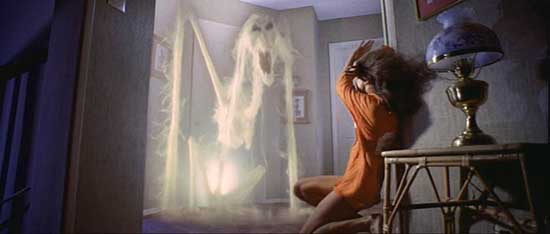 As depicted in “Poltergeist, “The Conjuring” and even “The Haunting of Hill House”, when experiencing highly malevolent haunt and poltergeist activity, the appropriate expertise is brought in to deal with such phenomena. However, finding a credible experienced expert is extraordinarily difficult and extremely rare. And unfortunately, a general search for experts in this field will produce individuals lacking the proper training, scientific background and professional expertise to deal with phenomena like this and its victims, pointing to unqualified “ghost-hunters” and self-proclaimed paranormal investigators, many the result of TV reality shows and the Internet.
As depicted in “Poltergeist, “The Conjuring” and even “The Haunting of Hill House”, when experiencing highly malevolent haunt and poltergeist activity, the appropriate expertise is brought in to deal with such phenomena. However, finding a credible experienced expert is extraordinarily difficult and extremely rare. And unfortunately, a general search for experts in this field will produce individuals lacking the proper training, scientific background and professional expertise to deal with phenomena like this and its victims, pointing to unqualified “ghost-hunters” and self-proclaimed paranormal investigators, many the result of TV reality shows and the Internet.
Gone are the university Parapsychology Departments and their team of scientists, technology and resources that would professionally conduct in-depth scientific case studies, a service of an era long past. However, after extensive research, I have found one credible expert from this past era, which not only has the background, special training and experience, as well as the resources, but also is one of the only investigators today continuing to take-on new clients and cases internationally. He is world renowned Parapsychologist/Anomalist Christopher Chacon. He has nearly four decades of experience dealing with thousands of cases of the most volatile haunt and poltergeist phenomena in every corner of the world. His one-of-a-kind hybrid multiple method of dealing with these phenomena makes him unquestionably the world’s top authority.
Not surprisingly, Chacon’s life-time of investigation and research includes all of the most haunted sites around the world; from Edinburgh Castle in Scotland to the Queen Mary Ship and the Winchester Mystery House in California, from the Monte Cristo Homestead in Australia to the Eastern State Penitentiary in Pennsylvania, from Poveglia Island Asylum in Italy to Tequendama Falls Museum in Columbia, from Bhangarh Fort in India to Sai Ying Pun Complex in Hong Kong, and just about every other famous haunt beyond. There are also countless other haunted sites that are significantly more active, more malevolent and volatile and kept confidential and private for a variety of reasons. Chacon is one of the only parapsychological researchers in the world that has access to these countless other confidential sites that are typically prohibited to all.
Upon being asked about the accuracy of haunts and poltergeists in popular Hollywood depictions, Chacon stated, “If one disassembles each dramatized story and examines each individual paranormal event and phenomenon depicted, they are actually disturbingly accurate to those that have been reported around the world. Again, I emphasize being reported.” He finds this surprisingly true with movies such as “The Sixth Sense”, “The Shining”, “The Conjuring” and even “Paranormal Activity”– all of which are inundated with high quantities of extreme paranormal events to heighten dramatic intensity.
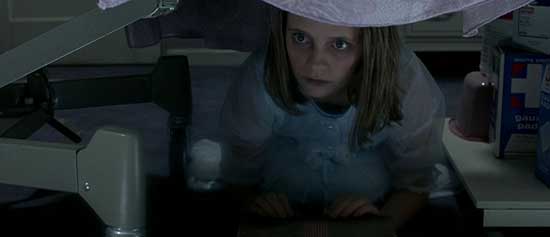 One film he feels that was particularly accurate in depicting one type of haunt phenomena is coincidentally the previously mentioned, “The Haunting”. It is also one of Chacon’s all-time favorite films stating, “Like the novel, this classic movie was more of a psychological thriller, depicting the phenomena very subjectively, emphasizing the human experience, which is very accurate, generally speaking, in how most react to phenomena of this type.” He also mentioned that the 1985 version of “Poltergeist” was another film that not only depicted a “contemporary realistic reaction” to phenomena but also “a realistic parapsychological procedure for investigating it.”
One film he feels that was particularly accurate in depicting one type of haunt phenomena is coincidentally the previously mentioned, “The Haunting”. It is also one of Chacon’s all-time favorite films stating, “Like the novel, this classic movie was more of a psychological thriller, depicting the phenomena very subjectively, emphasizing the human experience, which is very accurate, generally speaking, in how most react to phenomena of this type.” He also mentioned that the 1985 version of “Poltergeist” was another film that not only depicted a “contemporary realistic reaction” to phenomena but also “a realistic parapsychological procedure for investigating it.”
And while Chacon points out the similarities between real-life haunt and poltergeist phenomena and those depicted in movies, he also points out the innumerable fallacies and inaccuracies that have been perpetuated about real phenomena for over a century. “From the premise that a death or tragic event must have occurred for a location to be haunted, to the theory that electromagnetic fields play a role in all poltergeist phenomena, I found there to be countless misconceptions about haunts and poltergeists, especially in regards to mechanistic explanations and presumed workings of these phenomena.” So as it turns out, many of the long held beliefs surrounding haunts and poltergeists are actually wrong and outdated, but continue to be perpetuated by misinformed researchers, literature and even reality TV shows and movies. Having dealt with thousands of haunt and poltergeist cases worldwide, covering every culture, Chacon brings with him an incomparable first-hand knowledge and understanding of these phenomena that is unprecedented. “Every so often I encounter haunt poltergeist phenomena that completely redefines them. For this reason one of the biggest mistakes anyone can make when assessing these phenomena is to rush to a conclusion as to its true nature. Additionally, I have found that a significant number of phenomena in general being experienced and reported are actually being misinterpreted and misidentified and turn out to be an entirely different phenomenon all together. This is one of the reasons why it is crucial not to reach a conclusion until one has collected all the data and taken into consideration as many variables as possible”, Chacon explains, conveying his perspectives as an Anomalist, as well as a Parapsychologist.
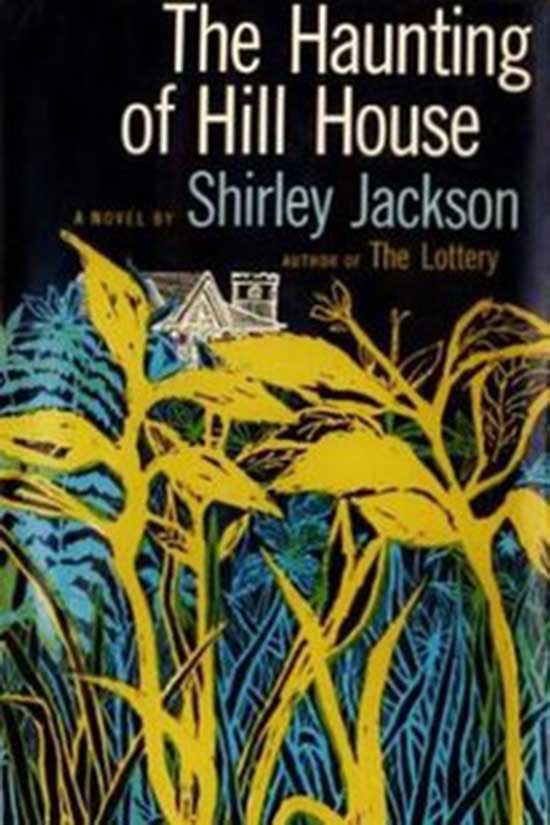 Because of his hybrid methodology for dealing with phenomena and his strict confidentiality criteria for accepting clients and cases, Chacon receives some of the most extraordinary cases in the world. In fact, in a special and very rare opportunity, I got to interview several of Chacon’s clients about their experiences with terrifying haunt poltergeist phenomena. Unlike the characters in “The Haunting of Hill House”, these real-life people were not seeking evidence of the paranormal, nor thought such phenomena could even be possible.
Because of his hybrid methodology for dealing with phenomena and his strict confidentiality criteria for accepting clients and cases, Chacon receives some of the most extraordinary cases in the world. In fact, in a special and very rare opportunity, I got to interview several of Chacon’s clients about their experiences with terrifying haunt poltergeist phenomena. Unlike the characters in “The Haunting of Hill House”, these real-life people were not seeking evidence of the paranormal, nor thought such phenomena could even be possible.
From a home with a long turbulent past to one that had a benevolent uneventful one, in each of the five cases from around the world the quiet security and peacefulness of each was inexplicably replaced with malevolent forces that seemed hell-bent on inflicting harm and other vile acts. The identities and specific locations of each family are being omitted from this article by their request, each telling a story of a life suddenly turned upside-down by rapidly escalating phenomena that could not be contained or understood. These five clients consisted of a family in the American Northeast, a family in Western Australia, a family in central Canada, a family in Northern Germany and a family in the American Southwest. In each case, the first awareness came with events that could possibly be explained-away or rationalized. Some of these included; dogs and cats suddenly refusing to enter, flowers and plant-life that quickly wilted and died, power surges and electrical disruptions, extreme sudden temperature changes, recurrent glimpses of “something” moving in peripheral vision, and a sudden uneasiness and uncomfortable feeling of being watched. Whatever the reason, be it lifestyle, belief system or simple denial, these repeated warning signs were overlooked and/or ignored.
The phenomena in each of these five cases quickly became more active, powerful and overt in varied degrees of acceleration and intensity making it impossible to ignore or explain-away, victims now experiencing; an ear splitting point-blank scream accompanied by a nauseating rancid odor, sound of heavy breathing coupled with visible breath vapor as if cold, garbled voices and whispers, doors, cabinets and windows opening and slamming shut, humanoid-shaped shadows darting through rooms coupled by a blast of wind, entire house sporadically shaking coupled with cracking and shattering walls, ceilings and mirrors, moving furniture and appliances, random massive arcs of electrical current, and being overcome with an uncontrollable “ferocious anger” upon entering the house that would immediately subside when exiting. In one case, each night while the family slept they would simultaneously experience (all together at same time) realistic lucid nightmares that ended in night terrors. In another case, the poltergeist would physically impersonate (i.e. morph into) other family members creating chaos until the moment of unbelievable realization when two identical family-members ended up in the same room. And in another case the self-contained shadows could be seen physically knocking objects off the wall and moving furniture.
When the phenomena in each situation became confrontational and violent, inflicting direct harm onto family members or anyone that entered, each property was evacuated so that the owners could explore other options; some choosing to give-up their property, while others unwilling to relent. In the latter, home owners brought in scientists, engineers, doctors and even priests to try and confidentially find answers and a way of stopping the malevolent phenomena. In the instances that priests were used, 2/3 of the time the haunt poltergeist activity became particularly malicious, beating and seriously injuring the priests while also causing extreme sickness. After exhausting all options, all five families, including those just wanting to sell the property, were referred to Christopher Chacon through various professional channels.
 Unlike “The Haunting of Hill House”, or any movie for that matter dealing with haunt poltergeist phenomena, all family members and any other witnesses involved had to go through a series of tests and examinations, including psychological and physiological tests, along with environmental tests of each location to rule out any scientific explanations, all conducted by qualified professionals prior to Chacon’s arrival. When Chacon arrived at each location he spent substantial time with the families, conducting interviews and assisting them with the traumatic affects from their experience. He then spent from an hour to several hours alone in each family’s home, “presumably conducting some sort of research or analysis”, suggested a family physician. No one knows exactly what took place when Chacon entered each horrific haunting, but in these five cases, the next time each family interacted with him, it was to escort them back into their home to demonstrate that it was now free of any phenomena whatsoever. Obviously each family was incredibly grateful for Chacon’s assistance and for the amazing results he had. Chacon never charges for his assistance.
Unlike “The Haunting of Hill House”, or any movie for that matter dealing with haunt poltergeist phenomena, all family members and any other witnesses involved had to go through a series of tests and examinations, including psychological and physiological tests, along with environmental tests of each location to rule out any scientific explanations, all conducted by qualified professionals prior to Chacon’s arrival. When Chacon arrived at each location he spent substantial time with the families, conducting interviews and assisting them with the traumatic affects from their experience. He then spent from an hour to several hours alone in each family’s home, “presumably conducting some sort of research or analysis”, suggested a family physician. No one knows exactly what took place when Chacon entered each horrific haunting, but in these five cases, the next time each family interacted with him, it was to escort them back into their home to demonstrate that it was now free of any phenomena whatsoever. Obviously each family was incredibly grateful for Chacon’s assistance and for the amazing results he had. Chacon never charges for his assistance.
In interviewing each of the families, I found them all to be very grounded, intelligent people, with upstanding professional careers and typical family lives. Religion played little to no role in four of the five families, with almost all of the adults being skeptical and nonbelievers in anything paranormal before the events took place. Even though the haunt poltergeist phenomena that had terrorized each of them was now gone, they all described ongoing symptoms that psychotherapists might define as PTSD (Post-Traumatic Stress Disorder). This would explain why Chacon had emphasized to each of the families to seek-out counseling and therapeutic resources. This ongoing trauma is also one of the reasons each family was reluctant to do any interviews even if their identities remained confidential. In many ways, trauma can be even more terrifying than any actual phenomena, since it can follow you wherever you go. That said, when I asked Chacon about the most memorable haunt poltergeist cases, he replied, “The situations that have left the biggest impact on me are not those with the most extraordinary phenomena, but rather those where people are the most seriously injured, traumatized and suffering physically and emotionally. Because even if they are out of harms-way physically, there is only so much you can do to relieve them from their ongoing trauma.”
Chacon continues to deal with the most volatile haunt poltergeist cases in the world, luckily, they are also the most rare. The most common type of haunt phenomenon experienced worldwide is actually the most innocuous, benign and nonphysical. “The majority of real haunt phenomena being reported is ‘subjective’ which is typically only perceived cognitively, by one or more select perceivers, leaving no physical trace or evidence in the environment”, says Chacon. As it turns out a good example of this might be the original novelization and the 1963 movie adaptation of “The Haunting of Hill House”, that leaves us with vague evidence of the haunt experiences, as chilling as they maybe, causing one to question whether it was real or not. Chacon further details that, “some 70% to 80% of all recurring haunt poltergeist phenomena actually have a rational explanation- be it psychological, physiological, environmental or circumstantial.” This is one of the reasons why all his potential clients have to meet strict criteria that include first ruling-out all these aspects. Nevertheless, the “other 20% to 30%” of reported phenomena seemingly defy “the present-day conventional laws of nature and physics.”
It goes without saying that Chacon’s real-life haunt poltergeist encounters are more terrifying and disturbing than most of us can imagine, making the upcoming “The Haunting of Hill House” redux all the more enticing, offering a dramatic glimpse of this world in the safety of our own homes.
 Shirley Jackson’s novel is set in an eighty-year old mansion and follows the trajectories of four characters and their reactions to experiences that leave us gravitating toward the “supernatural.” In fact, much of the original work’s brilliance relies on the writer’s use of psychological horror tactics, by eliciting the reader’s terror via subtle manipulation than by using overtly horror tropes. The previous two adaptations were for movies, so an adaptation for a television series could offer more opportunity to feature more of the brilliant nuisances of the original material. The 10-episode limited series for Netflix is being adapted and directed by Mike Flanagan who is also producing alongside Trevor Macy. Also producing is Darryl Frank and Justin Falvey with Steven Spielberg’s Amblin Television along with Paramount Television. Timothy Hutton will play the lead and is joined by Carla Gugino, Michel Huisman, Kate Siegel, Elizabeth Reaser and Henry Thomas. In addition to the original classic ghost story, this version reportedly features aspects of the Crane family mythology that could add another captivating dimension to the story. It is yet to be seen whether this adaptation is closer to Jackson’s original novelization or a springboard to an entirely different interpretation. What is for certain is that a talented team of this quality certainly has the potential of creating a chilling journey into the “haunting” experience. Appropriately enough, “The Haunting of Hill House” series is aiming for a Halloween 2018 premiere date on Netflix.
Shirley Jackson’s novel is set in an eighty-year old mansion and follows the trajectories of four characters and their reactions to experiences that leave us gravitating toward the “supernatural.” In fact, much of the original work’s brilliance relies on the writer’s use of psychological horror tactics, by eliciting the reader’s terror via subtle manipulation than by using overtly horror tropes. The previous two adaptations were for movies, so an adaptation for a television series could offer more opportunity to feature more of the brilliant nuisances of the original material. The 10-episode limited series for Netflix is being adapted and directed by Mike Flanagan who is also producing alongside Trevor Macy. Also producing is Darryl Frank and Justin Falvey with Steven Spielberg’s Amblin Television along with Paramount Television. Timothy Hutton will play the lead and is joined by Carla Gugino, Michel Huisman, Kate Siegel, Elizabeth Reaser and Henry Thomas. In addition to the original classic ghost story, this version reportedly features aspects of the Crane family mythology that could add another captivating dimension to the story. It is yet to be seen whether this adaptation is closer to Jackson’s original novelization or a springboard to an entirely different interpretation. What is for certain is that a talented team of this quality certainly has the potential of creating a chilling journey into the “haunting” experience. Appropriately enough, “The Haunting of Hill House” series is aiming for a Halloween 2018 premiere date on Netflix.
Having now personally gotten a glimpse into the real world of hauntings and poltergeists, viewers of “The Haunting of Hill House” should now keep in mind that paranormal phenomena of that potential and far greater could very well be manifesting somewhere in the world, and if so, hopefully Chacon will be available to deal with it.
For the “horror” genre and in particular, “The Haunting of Hill House”, it appears that literature and film faithfully reflect back what goes on in the real world, rather than just make it up- a truth that seems to be almost paradoxical. After all, the majority of ghost stories have always been consigned to the realm of fantasy- a genre that is always associated with escapism, fiction and unreality. And perhaps this is why we are continually reminded- whether it’s a real instance or a fictional episode- that our present reality, the world that we live in, the spaces that we inhabit and tell our stories to, can also reflect experiences that would normally be tremendously unreal and shadowy at times.
By Archita Mittra
 Horror News | HNN Official Site | Horror Movies,Trailers, Reviews
Horror News | HNN Official Site | Horror Movies,Trailers, Reviews


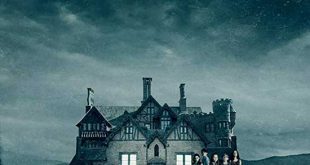
I just got through reading it for the third time a few months ago. I realized then that Hill House was based on the Winchester Mystery House after looking up Shirley Jackson’s bio and finding that she lived in Burlingame, CA until she was 13. Burlingame is only about 30 miles from the Winchester House.
A lot of people claim that “nothing happens” in the novel, but I think those are people who don’t understand Shirley Jackson’s idiosyncratic writing style. I totted up all the supernatural events from the novel and, weirdly enough, they number a scary 13: https://steemit.com/books/@janenightshade/the-haunting-of-hill-house
With Flanaghan at the helm, the new Netflix series may have a chance of being decent. I’ve been pretty disappointed in general by these online series of famous works. The Amazon series based on “Picnic at Hanging Rock” was atrocious.